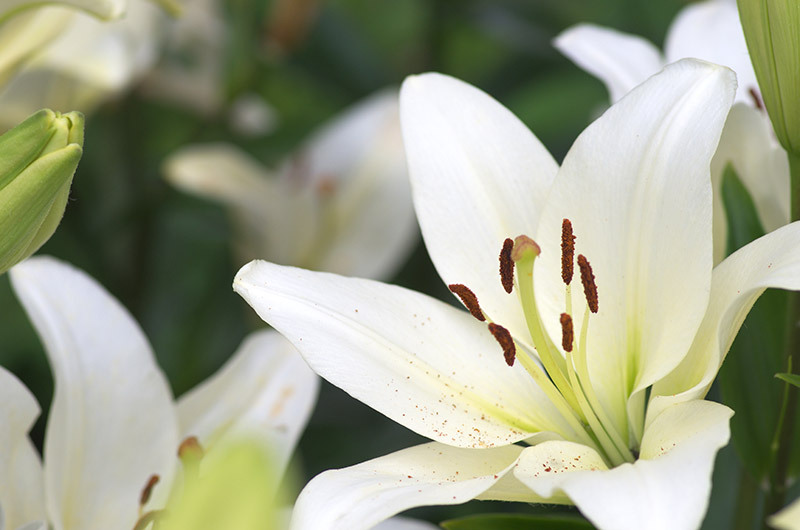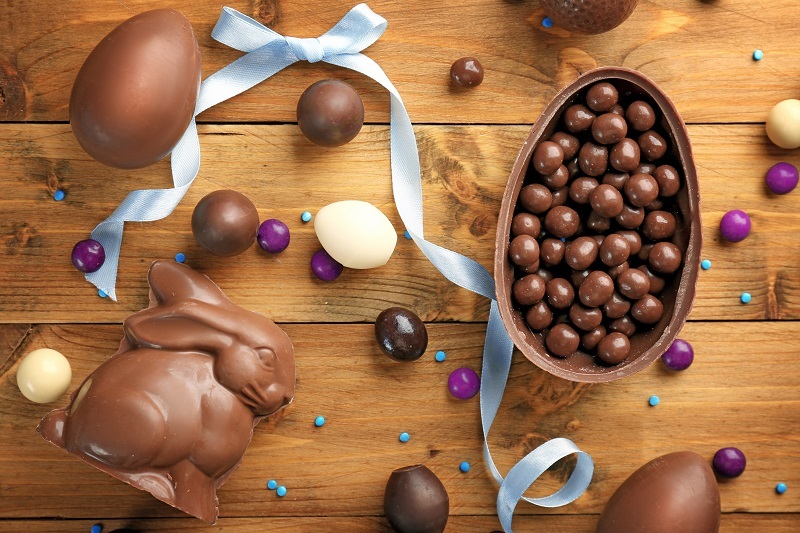Extend the Life of Your Holiday Poinsettias
Posted on 09/06/2025
Extend the Life of Your Holiday Poinsettias: A Complete Guide
The vibrant red, pink, and white bracts of the poinsettia plant have become inseparable from the spirit of the holiday season. As December approaches, millions bring these stunning plants into their homes, offices, and businesses. However, once the festive cheer subsides, many are left wondering: How can you extend the life of your holiday poinsettias? With the right care, attention, and techniques, it is possible to keep your poinsettia thriving for months or even year-round!
Why Do Holiday Poinsettias Fade So Quickly?
Despite their popularity, the lifespan of the holiday poinsettia is often misunderstood. In their native environment--Mexico and Central America--poinsettias are perennial shrubs that can reach 10-12 feet. But when brought indoors during winter, they often begin to wilt, drop leaves, and lose their vibrant color after just a few weeks.
The main reasons poinsettias decline after the holidays include:
- Exposure to fluctuating temperatures
- Improper watering - both overwatering and underwatering
- Dry indoor air due to heating systems
- Poor lighting conditions
- Lack of attention once the holidays are over
With the right strategies, you can address each of these issues and keep your poinsettias alive and blooming well beyond the festive period.

Immediate Steps for Extending Your Poinsettia's Life
It all starts with making the right choices even before bringing a poinsettia home.
1. Selecting a Healthy Plant
- Choose plants with dark green foliage down to the soil line.
- Check for no yellowing, dropping, or damaged leaves.
- Look for tiny yellow buds (cyathia) in the center--if these are still intact, your plant will last longer.
- Skip any plants sitting near cold drafts or heaters in the store.
2. Protect from the Cold
When transporting your poinsettia home, shield it from chilly winds and rapid temperature changes using a paper sleeve or plastic bag. Poinsettias react badly to cold stress (below 50?F/10?C), which can trigger leaf drop.
3. Optimal Placement at Home
- Place your poinsettia near a sunny window where it will receive bright, indirect light.
- Maintain a consistent temperature between 65-75?F (18-24?C) during the day and above 55?F (13?C) at night.
- Avoid placing near heating vents, fireplaces, or drafty windows.
- Keep away from fruit bowls--ripening fruit emits ethylene gas, which can damage the plant.
Watering: The Make-or-Break Factor
Overwatering is the most common reason holiday poinsettias fail. Water only when the soil surface feels dry to the touch, but don't allow the plant to dry out completely.
How to Water Correctly
- Remove the decorative foil or punch holes for drainage. Never let the pot sit in standing water as it leads to root rot.
- Use room-temperature water; cold water can shock the roots.
- Water slowly until it just begins to drain from the bottom.
- Allow excess to drain fully before returning the plant to its display spot.
During the winter, your poinsettia may need watering only every 5-7 days. As the air gets drier, especially indoors, check soil moisture more often.
Humidity Matters: Keeping Air Moist
Indoor heating can quickly make the air dry, which pulls moisture from both the leaves and the soil of your poinsettia. To extend your holiday poinsettia's lifespan, increase humidity around the plant.
- Group plants together to create a humid microclimate.
- Place a tray of pebbles and water beneath the plant's pot (without letting the pot touch the water).
- Use a humidifier in rooms with particularly dry air.
Fertilizing: When and How
Don't fertilize your poinsettia while it's in full flower--wait until late winter or early spring, once the colorful bracts begin to fade and you see new green growth.
Fertilize every 2-3 weeks with a balanced, all-purpose houseplant formula diluted to half strength. Never over-fertilize, as excess salts can burn the plant's roots.
Encouraging Rebloom and Continued Growth
With careful year-round care, you can not only keep holiday poinsettias alive but also encourage them to rebloom for next Christmas!
Pruning After the Holidays
- In March or April, when colorful bracts fade, cut the plant back to 4-6 inches above the soil. This helps it regrow bushier and healthier.
- Continue watering and fertilizing as new growth appears.
Moving Outdoors in Summer
- If you live in USDA zones 9-11, you can plant poinsettias outdoors as shrubs.
- Elsewhere, move your potted plant outside when night temperatures consistently stay above 55?F (13?C).
- Choose a spot with bright, indirect light, and shield from hot midday sun.
Repotting
In spring, you might notice your poinsettia is root-bound. Repot into a slightly larger container with fresh, well-draining potting mix. Water thoroughly after repotting.
Bringing Poinsettias Back Indoors
Before autumn's chill arrives, bring your plant indoors. Check carefully for insects or pests before returning the plant to a sunny window.
How to Re-Bloom Your Poinsettia for Next Holiday
Poinsettias require a specific "short-day" treatment to develop those stunning colored bracts. In their natural habitat, the shortening days of fall trigger this process. You can mimic these conditions at home.
Step-by-Step "Short-Day" Technique
- Starting in late September or early October: Each evening, place your poinsettia in a completely dark place (such as a closet or cardboard box) for 14 hours.
- In the morning, move it to bright, indirect sunlight for the remaining 10 hours.
- Repeat this cycle daily for 8-10 weeks until the bracts gain color, usually by late November.
Any light leakage during the dark period can disrupt blooming, so consistency is key. Once color returns, resume regular care.
Frequently Asked Questions About Caring for Holiday Poinsettias
Are Poinsettias Toxic to Pets?
Contrary to popular myth, poinsettias are only mildly toxic if chewed or eaten by pets, and typically cause minor drooling or stomach upset. However, it's best to keep out of reach of curious cats and dogs.
Why Are My Poinsettia's Leaves Turning Yellow and Falling Off?
This usually signals overwatering, underwatering, or exposure to cold. Review your care routine, ensure proper drainage, and protect from drafts.
Can I Propagate My Poinsettia?
Yes! In late spring or early summer, use sharp, sterile scissors to cut 3-4" shoots. Dip them in rooting hormone and plant in moist potting mix. Cover with a plastic bag to maintain humidity until roots form.
Creative Ways to Use Long-Lasting Poinsettias
- Use as a stunning centerpiece all winter long.
- Combine with evergreens or winter citrus for a festive arrangement.
- Grow multiple colors for a striking statement display.
- Gift healthy reblooming plants to friends and family next Christmas.
Poinsettia Care Calendar at a Glance
- January-March: Keep watering lightly, provide good light.
- April-May: Prune back hard, repot if needed, fertilize, encourage new growth.
- June-August: Move outdoors, water and fertilize regularly, pinch shoots for bushier growth.
- September-October: Bring indoors, begin short-day treatment for reblooming.
- November-December: Celebrate your vibrant, healthy holiday poinsettia!

Quick Recap: Extending the Life of Your Holiday Poinsettias
- Choose a healthy plant and protect from cold right away.
- Keep in bright, indirect sunlight, not near heat or cold drafts.
- Water carefully. Never overwater--let the surface soil dry before watering again.
- Boost humidity to prevent leaf drop in dry indoor air.
- Fertilize only after bracts have faded in late winter or spring.
- Prune, repot, and provide short-day conditions in autumn for reblooming.
Conclusion: Enjoy Beautiful Poinsettias All Year Long
With this comprehensive care guide, you can enjoy the beauty and color of holiday poinsettias for months--or even years--to come. Poinsettias are not just temporary decorations; they are living plants capable of thriving with the proper attention. Follow these tips to extend the life of your holiday poinsettias, and they'll repay you with brilliant color and lush foliage, brightening your home well beyond the holidays.
Cherish your poinsettias, nurture them, and they'll continue to be a symbol of cheer and good fortune--season after season.
Latest Posts
Unveiling the Symbolism of Red Roses for Lovers
Top Picks for Low Maintenance Plants for Your Office
Which Bloom Reflects Your Inner Essence?





